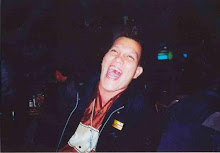Helena, Constantine's mother, being inspired with a great desire to find the identical cross on which Christ had suffered for our sins, came to Jerusalem, and consulted all those whom she thought likely to assist her in compassing [accomplishing] her pious design. She was by them credibly informed, that if she could find out the sepulcher, she would likewise find out the instruments of the punishment; it being always a custom among the Jews to make a great hole near the place where the body of the criminal was buried, and to throw into it whatever belonged to his execution; looking upon all these things as detestable objects, and which for that reason ought to be removed out of sight. The pious empress, therefore, ordered the profane building to be pulled down, the statues to be broken in pieces, and the rubbish to he removed; and upon digging to a great depth, they discovered the holy sepulcher, and near it three crosses; also the nails which had pierced our Saviour's body, and the title which had been affixed to his cross. By this discovery they understood that one of the three crosses was that which they were in quest of, and that the other two belonged to the two malefactors between whom our Savior had been crucified. But as the title was found separate from the cross, a difficulty remained to distinguish which of the three was that cross on which our divine redeemer had consummated his sacrifice for the salvation of the world.
In this perplexity the holy bishop Macarius, knowing that one of the principal ladies of the city lay extremely ill, suggested to the empress to cause the three crosses to be carried to the sick person, not doubting but God would discover which was the cross they sought for. This being done, St. Macarius prayed that God would have regard to their faith, and after his prayer, applied the crosses singly to the patient, who was immediately and perfectly recovered by the touch of one of the crosses, the other two having been tried without effect.
St. Helen, full of joy for having found the treasure which she had so earnestly sought, and so highly esteemed, built a church on the spot, and lodged it there with great veneration, having provided an extraordinary rich case for it. She afterward carried part of it to the emperor Constantine, then at Constantinople, who received it with great veneration: another part she sent, or rather carried to Rome to be placed in the church which she built there, under the name of The Holy Cross of Jerusalem, where it remains to this day.
The title was sent by St. Helen to the same church in Rome, and deposited on the top of an arch, where it was found in a case of lead in 1492, and may be read at length in Bozius. The inscription in Hebrew, Greek, and Latin, is in red letters, and the wood was whitened. Thus it was in 1492 but these colors have since faded. Also the words Jesus and Judaeorum are eaten away. The board is nine, but must have been originally twelve inches long. The main part of the cross St. Helen enclosed in a silver shrine, and committed to the care of St. Macarius, that it might be delivered down to posterity as an object of veneration. It was accordingly kept with singular respect in the magnificent church which she and her son built at Jerusalem, and was shown publicly to the people at Easter. This stately church was hence called the Basilic of the Holy Cross; it was also called the church of the Sepulchre or of the Resurrection, thought this was properly the title only of the holy chapel which stood over the sepulcher or cavern in which our Savior was buried, which was in the garden adjoining to Mount Calvary; so that this great church covered the sepulcher, and was extended so far on Mount Calvary as also to included the rock Golgotha, and the very place where the cross of Christ stood at his crucifixion. This extensive building was enclosed within the walls of Jerusalem when that city was rebuilt. The find of the cross by St. Helen happened in the year of our Lord 326, in the thirteenth of the pontificate of Sylvester, and the first after the council of Nice."

No comments:
Post a Comment